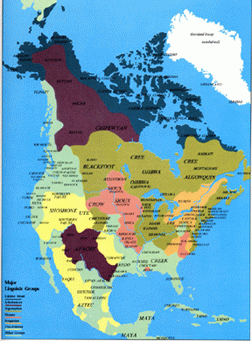
June/July 2005
Indigenous Struggle - from Palestine to Turtle Island
The New York Committee to Defend Palestine on June 2nd held a teach-in that examined the parallels between the struggles of the Indigenous people of Turtle Island (commonly referred to as “North America”) and the indigenous people of Palestine -- the Palestinians.
The event began with a presentation by Tiokasin Ghosthorse, a member of the Cheyenne River Lakota Nation of South Dakota and host and producer of First Voices Indigenous Radio on WBAI. Tiokasin greeted the audience in his native tongue of Lakota and reminded them that English in America is a foreign language. He shared personal stories of his upbringing on a reservation while conveying that his experiences were not dissimilar to those of his Native sisters and brothers who also share the scars inflicted by colonization and oppression.
He spoke of the continuing economic genocide being committed against Indigenous people. Despite being the original inhabitants of the land, having nearly everything stolen from them, they now live in conditions of abject poverty, facing high suicide rates, high infant mortality rates, and a low average lifespan of less than 50 years.
Tiokasin discussed how pro-colonization historians attempt to erase the existence of millions of Indigenous people, claiming that prior to the arrival of U.S. settlers there were no more than 10 million Native inhabitants of the land. Indigenous accounts put the number at 100 million. The gross reduction to 10 million is imposed to minimize the impact of U.S. conquest and expansion, and to deny the slaughter of additional millions of men, women and children.

Indigenous nations of Turtle Island before
occupation |
The number of Indigenous people today stands at 2.5 million. This number itself is questionably low, as according to Tiokasin, Indigenous people must "prove their existence" to be recognized by the colonizer as a "legitimate" Native. Tiokasin referred to this policy as an effort by the U.S. to "genocide us out of existence."
In the discussion that followed Tiokasin’s presentation, he and audience participants discussed the relationship between experiences of Palestinians and the Indigenous people of Turtle Island.
An activist noted that both the U.S. and Israel are European-style colonial, settler, nation states created with the dispossession and genocide of the indigenous inhabitants. European settlers in the U.S. and in Palestine engaged in widespread land confiscation and forced brutal deportations.
A racist mentality of superiority is used to justify colonization and settling of both North America and Palestine, with the demonization of the original inhabitants. Natives of Turtle Island have been referred to as “barbarians” and “savages,” while Palestinians are often referenced as “terrorists” and “Islamic extremists.” We read in U.S. text books that the settlers brought “civilization” to the “New World,” and we have been inundated with the false propaganda that Zionists “made the dessert bloom.”
Another participant noted the similarities between the reservations onto which Indigenous people were forced and the bantustans being created in Palestine by a series of bypass roads, checkpoints and the Apartheid wall. Whether being born into an economic prison, or within concrete walls, both indigenous peoples are subjected to a life of oppression.
Both Occupiers have also engaged in cultural genocide. A member of the New York Committee to Defend Palestine shared the history of the mass destruction of the buffalo and paralleled this with the frequent uprooting of olive trees in Palestine.
In the late nineteen hundreds, General William Sherman, recognizing both the cultural and economic significance of the buffalo to the Native people, ordered their slaughter. Of course, the Indigenous people relied on the buffalo for food, clothing, shelter and tools. The intended effect of their elimination was to create extreme hardship, including death, of those who depend on the buffalo.
Similarly, the occupier in Palestine often destroys a cultural and economic staple of the Palestinians: the olive tree. The Zionist military has uprooted thousands of olive trees, each time robbing Palestinians of their lifeblood.
Although the discussion centered much on a shared history of oppression, participants also noted the shared tradition of resistance and survival. Tiokasin’s refusal to allow his language to die and his commitment to preserving the culture and heritage of the Lakota people serves as a testament to the Indigenous peoples’ will to survive. Despite decades of theft and oppressing, the colonizer has still not been able to fully eradicate the Natives.
The Palestinians also refuse to be disappeared. Palestinians are resilient in their struggle against occupation and for the Right to Return. They too keep their culture alive despite efforts by the Occupier to erase and co-opt it.
The New York Committee to Defend Palestine holds teach-ins on the first Thursday of even-numbered months on various topics related to Palestine.
Contact us: Al-Awda Newspaper
(973) 954-2521
info@newjerseysolidarity.org
http://www.newjerseysolidarity.org
New Jersey Solidarity
344 Grove Street, Suite 131
Jersey City, NJ 07302
Our editorial collective is responsible for editing, laying out and developing this publication. We are open to new members who are in accord with the mission and principles of this newspaper.
Please contact us about your upcoming events and activities of interest to readers of this publication.
Please contact us for advertising rates and information, or for material on becoming a distributor.